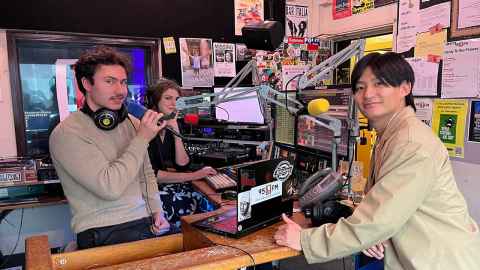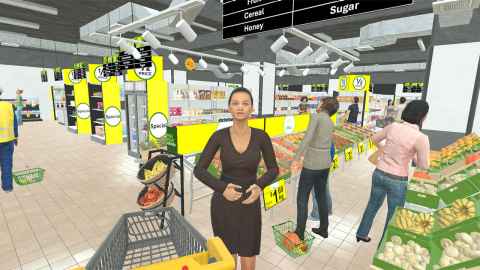Using virtual reality to aid brain injury recovery
24 June 2025
A University of Auckland bioengineering research team is developing a rehabilitation system for traumatic brain injuries, using virtual reality simulations.

More than 35,000 people in New Zealand and 37 million people worldwide suffer from a traumatic brain injury (TBI) every year. It might be from falling and hitting their head, from contact sports, road accidents or assaults.
The impact of a traumatic brain injury on someone's daily life can be huge – it might be balance and coordination problems, persistent tiredness and lack of energy, trouble with concentration and problem solving, and/or greatly increased sensitivity to light and sounds.
A bog-standard visit to the supermarket or a drive to work in the car can become overwhelming, says Riku Otono, a PhD student at the Auckland Bioengineering Institute’s Empathic Computing Lab.
All those external stimuli, those decisions to make and those people everywhere!
“Your brain can’t handle normal tasks. Some patients describe it as almost like there’s a fog in your brain.”
Virtual reality lets patients safely practise real-life tasks like driving or shopping without the real-world risks, and without being overwhelmed.
Researchers at the Auckland Bioengineering Institute are designing VR environments including a cafe and a supermarket, where traumatic brain injury patients can practise handling everyday situations from their own home – building up their skill levels.
“For example, you could get used to shopping in a supermarket without too many people or staff. Then you could ramp up the difficulties in the environment as your rehabilitation continued.”
Otono’s PhD project involves developing an empathetic virtual character to monitor the brain-injured patients and give personalised feedback. In the shopping scenario, the character will be a coach, to support and prompt the patients while they are in the (virtual) supermarket, he says. In the driving scenario, the character will be like a driving instructor.

“The VR character is able to read biosignals – heart rate or brain activity, for example – from the traumatic brain injury patient to sense how someone is feeling, and respond supportively.
"The goal is to boost emotional connection and keep people more engaged in their recovery journey.”
Riku Otono chatted to bFM ‘Ready Steady Learn’ hosts Milly Smyth and Tuva’a Clifton about his virtual reality brain injury rehabilitation research. Listen to the interview here.
Media contact
Nikki Mandow, Research Communications
Mob: 021 174 3142
Email: nikki.mandow@auckland.ac.nz